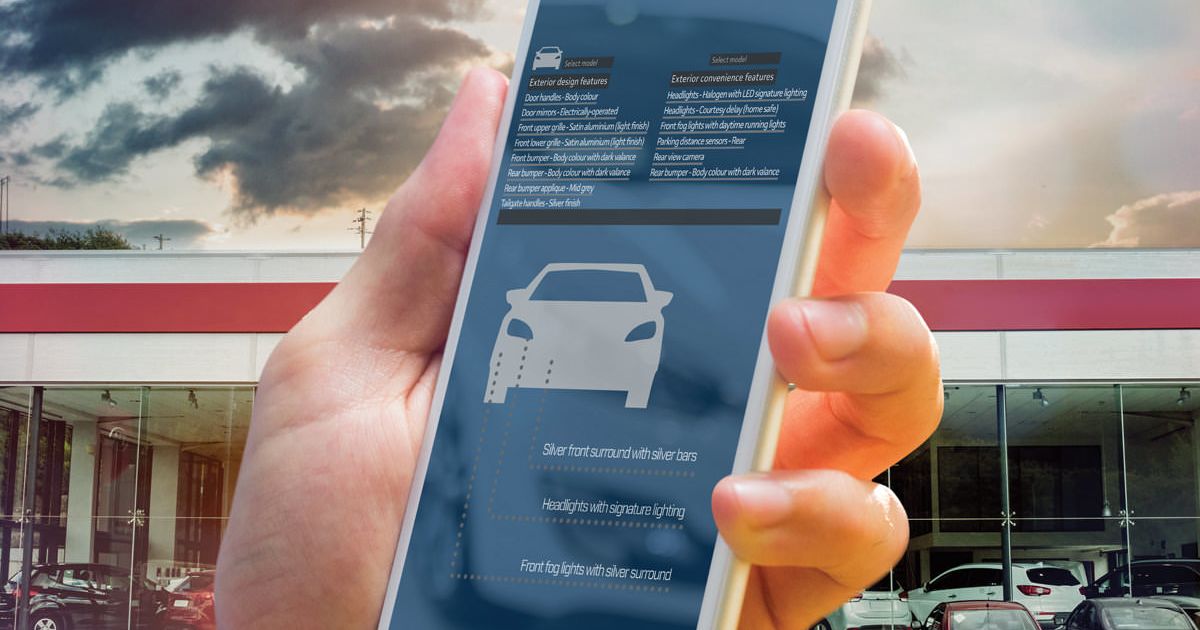
Together, Millennials and Gen Xers now represent a larger population than the generations that preceded them, 1 and these consumers are so accustomed to the convenience and speed of online shopping that they are now looking online to purchase boats, homes, and even cars.
Today, 76% of car buyers are open to buying completely online 2 and 64% of car buyers want to handle more of their purchase online compared to the last time they purchased a vehicle.3 Consumer satisfaction with car buying has increased with digitization, reaching an all-time high of 72% in 2020, up from 60% in 2019.4 New form retailers are realizing greater than 100% annual revenue growth.5
In 2021, U.S. eCommerce sales totaled $933B 6 and are projected to grow 23.6% by 2025.8
By 2025, global auto eCommerce sales are expected to reach 25% of total eCommerce sales.8
With the addition of digital retailing solutions, automotive online transactions in 2021 were just over 13% of eCommerce sales. However, all these sales still required some level of in-person sales support.7
Digital retailing and fully online eCommerce are often viewed as synonymous, but they are not. Digital retailing enables some of the consumer journey with tools that allow consumers to shop and compare, configure, get trade-in valuations, and estimate payments. However, completing a digital retailing deal still requires manual intervention by the retailer.
Automotive eCommerce represents the convergence of existing digital retailing capability with new automation and data intelligence resulting in a fully online end-to-end purchase experience that is hands-off for the retailer.
eCommerce provides retailers benefits such as expanded geographical reach, more profitable deals, lower capital requirements and improved cash flows.
Transforming to a fully online eCommerce channel takes time and requires a strong vision backed by leadership. The changes required can be difficult, especially when a team has been selling cars the same way for decades.
Retailers will need to revisit both strategy and operations. This may include updating corporate values, business model, operating model, value proposition, and operations. Inventory management is an operations related example. Inventory management must bridge the online and on-lot worlds. Retailers should create new inventory processes that establish clear boundaries for communicating and tagging inventory as sold, removing inventory from online listings to avoid lags that could affect consumer trust, and marking sold inventory unavailable on the physical lot to avoid accidental re-sale. There is no room for error in a fully online selling environment where the consumer does not come to the showroom.
Cox Automotive has developed a formal transformation playbook for retailers to utilize to properly prepare for an eCommerce future. Here are a few examples of preparation steps required to successfully sell fully online:
Retailers must think of ways to stand out and go beyond the consumer-friendly policies that everyone will offer, like 7-day returns and free delivery within a certain radius. Empowering front-line team members to prioritize customer loyalty can help build the right customer service mindset.
Developing the roles and processes necessary to successfully complete an online sale may require a mixture of training, thoughtful staff reallocation, and new hires within marketing, sales, and operations. Compensation plans may need adjustment to incentivize the actions necessary to encourage profitable online transactions.
For consumers buying sight unseen, retailers can help bring vehicles to life and establish trust by providing detailed, high-resolution photos, videos, and descriptions including blemish disclosure and vehicle history reports. Coordinating inventory management between online and in-store is vital to ensure that vehicles are marked sold promptly via either channel. While pricing will be the same in any channel, the efficiencies of online retail can allow for offering exclusive benefits to digital retailing customers such as a more flexible return policy.
Retailers should build awareness and traffic at the top of the funnel by showcasing their eCommerce initiative. Targeting customers via search engine optimization and search engine marketing allows retailers to pull in car buyers earlier in their purchase process and quickly move them into brand awareness and demand generation journeys to feed the sales pipeline.
An eCommerce site should guide the customer through the purchasing process, establish clear and fair warranty and return policies, and show how to request additional vehicle information or personal support. Search defaults are paramount for helping the consumer find what they are looking for.
Planning for eCommerce success begins now. Completing the necessary groundwork today will help make fully automated eCommerce successful and profitable going forward.
Planning for eCommerce encompasses:
- Talent and Organization: Optimize staffing to launch and manage the eCommerce business.
- Inventory and Merchandising: Establish simple pricing models and vehicle merchandising and inventory processes to support eCommerce sales success.
- Marketing: Create an eCommerce marketing strategy with the right resources to drive consumer acquisition and conversion through to online transactions.
- Consumer Experience: Build an eCommerce go-to-market strategy, including on-site positioning and processes.
- Trade-in Valuation: Define processes and procedures that support online, sight-unseen trade-in valuations.
- F&I: Create automated deal configurations to increase profitability.
- Order Fulfillment and Delivery: Define support processes, inventory procedures and delivery parameters.
Learn More at coxautoinc.com/transform.
1Millennials overtake Baby Boomers as America’s largest generation, Pew Research Center, 2020
2 Cox Automotive Car Buyer Journey Study, 2021
3,4,8Cox Automotive Digitization of End to End Retail Study
5 Morgan Stanley/Quarterly Investor Reports
6 2020 McKinsey Automotive Retail Consumer Survey (US, China, Germany)
7 U.S. Census Bureau Second Quarter 2021 Retail E-Commerce Report
Cox Automotive Inc. makes buying, selling, owning and using vehicles easier for everyone. The global company’s more than 27,000 team members and family of brands, including Autotrader®, Dealer.com®, Dealertrack®, Kelley Blue Book®, Manheim®, NextGear Capital®, VinSolutions®, vAuto® and Xtime®, are passionate about helping millions of car shoppers, 40,000 auto dealer clients across five continents and many others throughout the automotive industry thrive for generations to come. Cox Automotive is a subsidiary of Cox Enterprises Inc., a privately-owned, Atlanta-based company with annual revenues of nearly $20 billion. www.coxautoinc.com